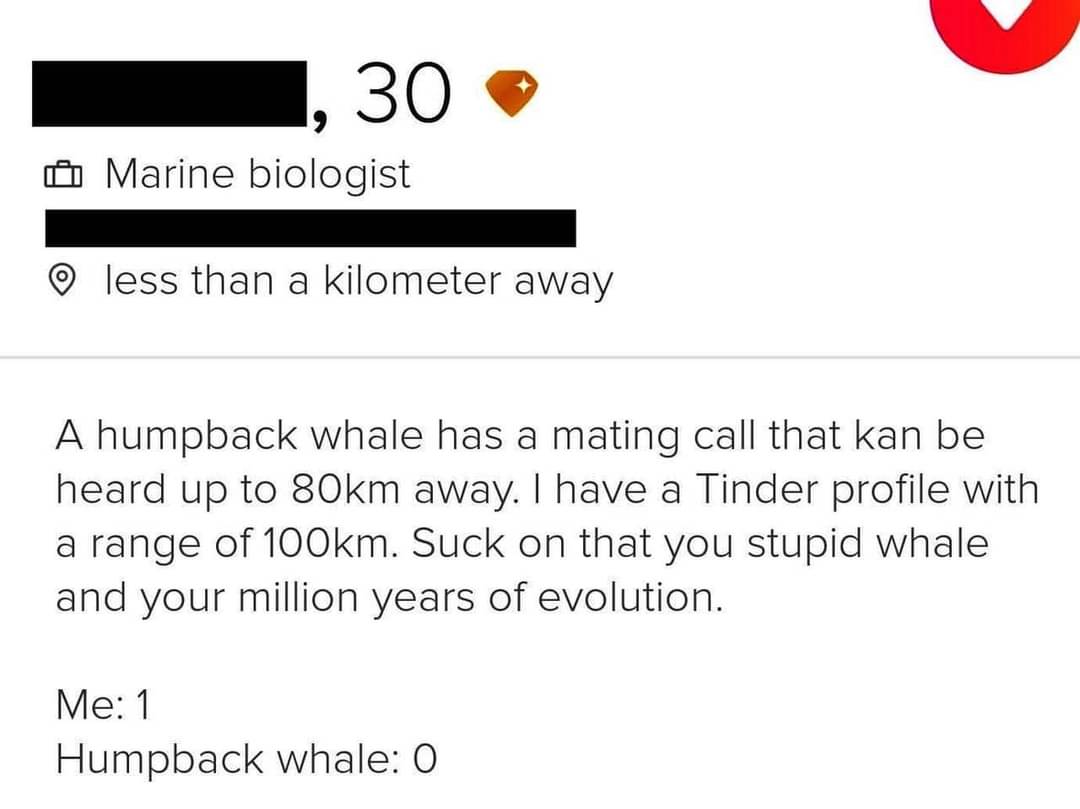this post was submitted on 29 Jun 2024
1108 points (98.8% liked)
Science Memes
9984 readers
1903 users here now
Welcome to c/science_memes @ Mander.xyz!
A place for majestic STEMLORD peacocking, as well as memes about the realities of working in a lab.

Rules
- Don't throw mud. Behave like an intellectual and remember the human.
- Keep it rooted (on topic).
- No spam.
- Infographics welcome, get schooled.
Sister Communities
Science and Research
Biology and Life Sciences
- [email protected]
- [email protected]
- [email protected]
- [email protected]
- [email protected]
- [email protected]
- [email protected]
- [email protected]
- [email protected]
- [email protected]
- [email protected]
- [email protected]
- [email protected]
- [email protected]
- [email protected]
- [email protected]
- [email protected]
- [email protected]
- [email protected]
- [email protected]
- [email protected]
- [email protected]
- [email protected]
- [email protected]
- !reptiles and [email protected]
Physical Sciences
- [email protected]
- [email protected]
- [email protected]
- [email protected]
- [email protected]
- [email protected]
- [email protected]
- [email protected]
- [email protected]
Humanities and Social Sciences
Practical and Applied Sciences
- !exercise-and [email protected]
- [email protected]
- !self [email protected]
- [email protected]
- [email protected]
- [email protected]
Memes
Miscellaneous
founded 2 years ago
MODERATORS
you are viewing a single comment's thread
view the rest of the comments
view the rest of the comments

How well sound propagates through water is highly dependent on the water temperature variations over depth. There can be conditions in which sounds can be trapped between two different horizontal "layers" and travel far greater distances than 80km.
Wow, that's cool. Completely makes sense but not something I'd thought about...
Would the temperature differences need to be very large for this effect to occur?
As sound travels through a water layer where the speed through which it travels varies with depth, the sound will tend to refract towards where it is the slowest.
A layer where temperature decreases as depth increases will refract sound downwards. A layer that has the inverse temperature properties will do the opposite. A layer that is isothermal (where the temperature remains constant as depth changes), will still tend to refract sound upwards because the increase in pressure also increases velocity, although not as strongly as temperature does, which is why temperature differences can easily overcome this effect where the water is not isothermal.
If you have a layer that refracts sound downwards on top of a layer that refracts sound upwards, you just created a sound channel, which acts as a wave guide in which sound will remain trapped and travel far longer distances horizontally before dissipating.
Ultimately you can't really put a number on the required temperature differences because there are many other factors to take into account like how steeply the speed of sound changes, how tall the layer(s) are, what is the frequency of the sound, or how much of it you want to remain "trapped" in the sound channel.
Holy crap that's bonkers! Thanks, you've blown my mind
"The SOFAR channel (short for sound fixing and ranging channel) ... is a horizontal layer of water in the ocean at which depth the speed of sound is at its minimum" ...
"The SOFAR channel acts as a waveguide for sound, and low frequency sound waves within the channel may travel thousands of miles before dissipating." ... https://en.m.wikipedia.org/wiki/SOFAR_channel
Crazy stuff, thanks!